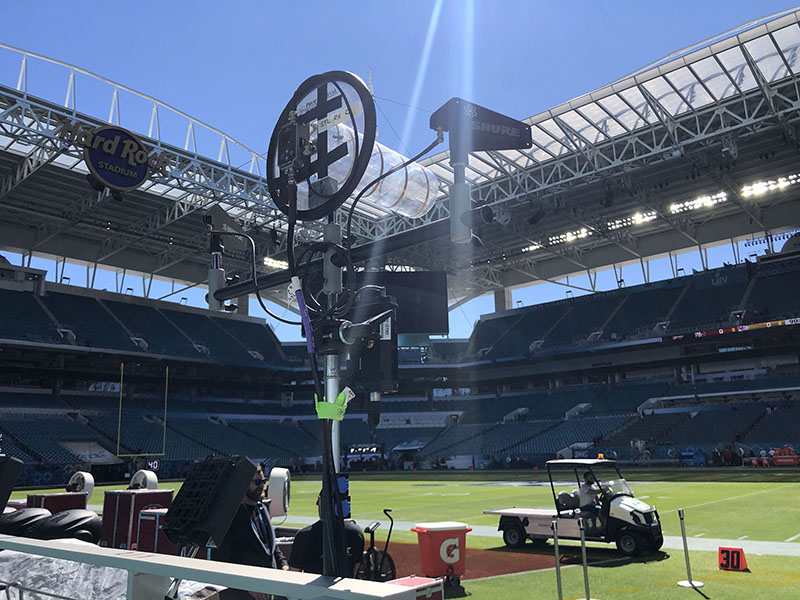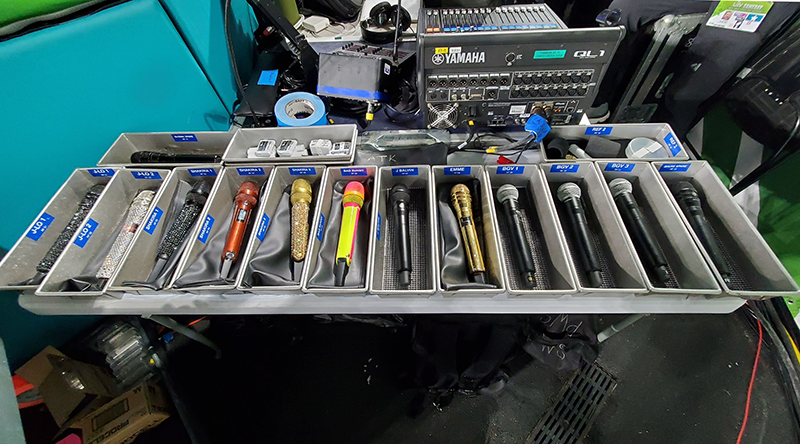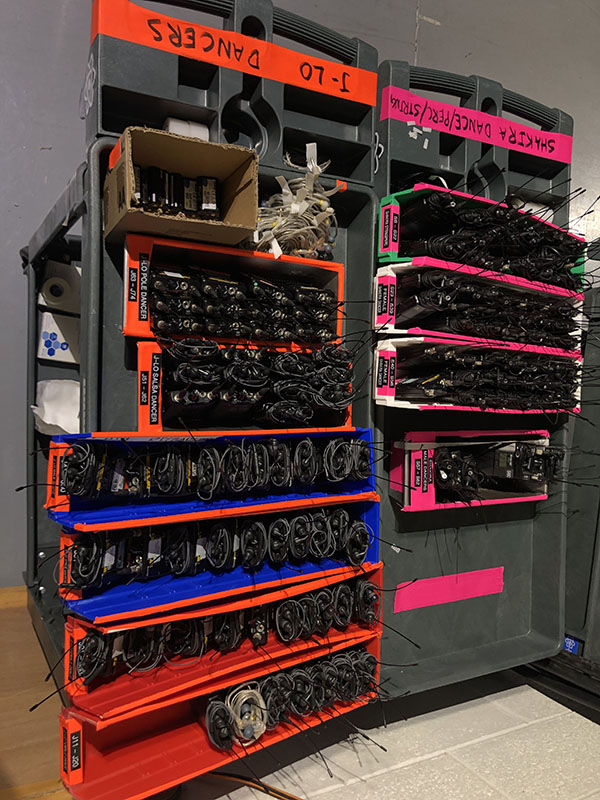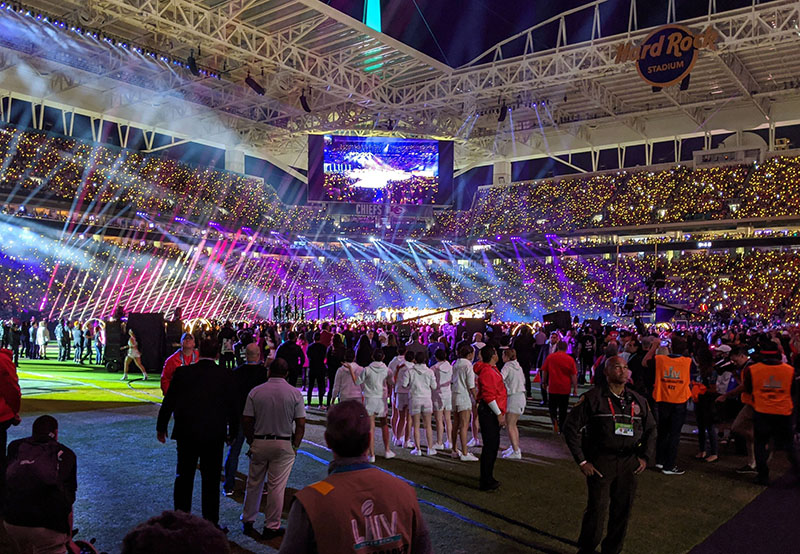
“These days if you regularly use more than 50 channels of wireless at an event, you have to use alternative frequency bands to get the job done,” Van Winkle adds. “The Part 74 license provides access to the STL band, which still isn’t a lot of bandwidth, but can be enough for wireless microphones.”
Headliner Jennifer Lopez and most of the halftime entertainment were equipped with Shure Axient Digital wireless microphones. Shakira and Bad Bunny were on Sennheiser wireless microphones operating in the 600 MHz range compliments of the STA.

Meanwhile, ATK Versacom’s Matt Campisi managed intercom communications with a Riedel Bolero system operating in the 1.9 GHz DECT band. This was in conjunction with another Bolero system that installed at the stadium. “There are only so many manufacturers that produce intercoms that work,” Campisi explains. “We ended up using Bolero but had a full complement of Radio Active Designs (RAD) intercoms that operate primarily in VHF on hand in case things went sideways.”
“Being able to use STL and DECT is great, but people should remember there’s still limited bandwidth in those areas,” Trenda adds. “STL is comparable to the bandwidth of three television channels while DECT is less than two. There was still a lot of sharing of frequencies between organizations. It was imperative that we all work together and understand everyone’s wireless needs. It’s the only way something of this scope can work.”

More To The Puzzle
The other key component to the wireless infrastructure was antenna use and placement. The myriad of systems required an assortment of antennas tuned for the specific frequency bands in use. In this case, that meant more antennas than have been used in the past.
“We had a pair of UHF antennas and a pair of STL antennas for our primary systems on the near side of the field, as well as a pair of STL antennas on the far side of the field for our Axient Digital quadversity system,” says Van Winkle. “Because everything was packed so tight in those bands, we were very conscious of applying the right filtering as well. Tight filtering on the front of a receiver ensures it works reliably in a congested RF environment. Reliability was key.”

There was minimal room for equipment on the sidelines, so the IEM transmitters and microphone receivers were located in a rack room underneath the stands. There were fiber optic and coaxial cable connections from rack room out to the sidelines. Signals from the receive antennas were carried back to the rack room by a WisyCom RF over Fiber (RFoF) system. The in-ear monitor system racks were located close enough to the field to allow runs of heavy-duty coax to transmit antennas on the sidelines.
The result of all of the efforts led to meeting the stated goal for the event: wireless performance without a problem, with the NFL’s Cave noting that it “was by far the best frequency coordination ever for a Super Bowl” that was due mostly to the extreme amount of detailed planning that took place long before game day.
